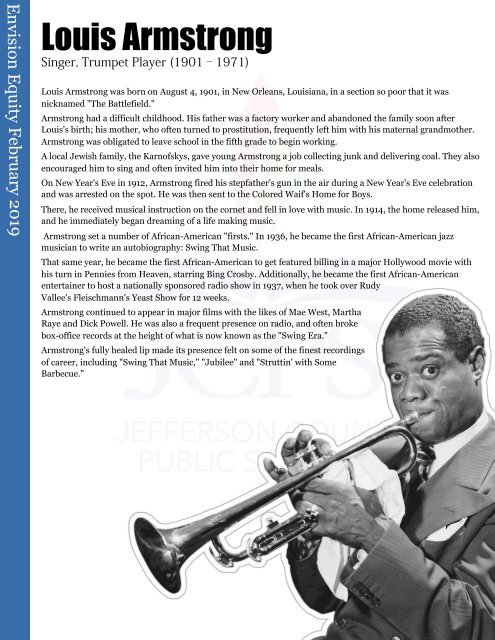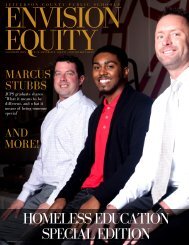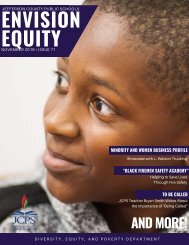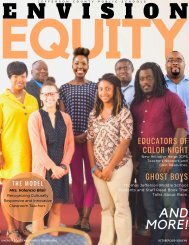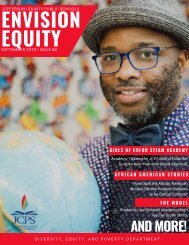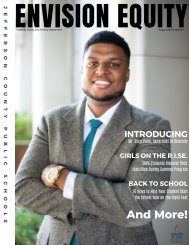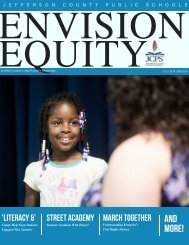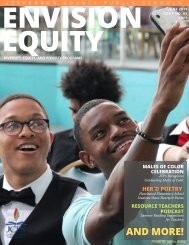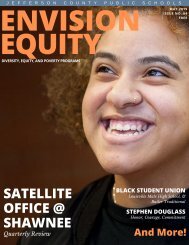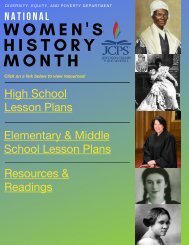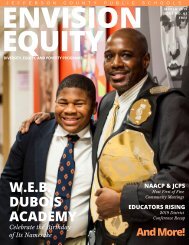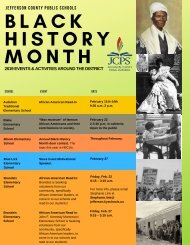Envision Equity February 2019 Special Black History Month Edition
Envision Equity February 2019 Special Black History Month Edition
Envision Equity February 2019 Special Black History Month Edition
Create successful ePaper yourself
Turn your PDF publications into a flip-book with our unique Google optimized e-Paper software.
<strong>Envision</strong> <strong>Equity</strong> <strong>February</strong> <strong>2019</strong><br />
Louis Armstrong<br />
<br />
<br />
Louis Armstrong was born on August 4, 1901, in New Orleans, Louisiana, in a section so poor that it was<br />
nicknamed "The Battlefield."<br />
Armstrong had a difficult childhood. His father was a factory worker and abandoned the family soon after<br />
Louis's birth; his mother, who often turned to prostitution, frequently left him with his maternal grandmother.<br />
Armstrong was obligated to leave school in the fifth grade to begin working.<br />
A local Jewish family, the Karnofskys, gave young Armstrong a job collecting junk and delivering coal. They also<br />
encouraged him to sing and often invited him into their home for meals.<br />
On New Year's Eve in 1912, Armstrong fired his stepfather's gun in the air during a New Year's Eve celebration<br />
and was arrested on the spot. He was then sent to the Colored Waif's Home for Boys.<br />
There, he received musical instruction on the cornet and fell in love with music. In 1914, the home released him,<br />
and he immediately began dreaming of a life making music.<br />
Armstrong set a number of African-American "firsts." In 1936, he became the first African-American jazz<br />
musician to write an autobiography: Swing That Music.<br />
That same year, he became the first African-American to get featured billing in a major Hollywood movie with<br />
his turn in Pennies from Heaven, starring Bing Crosby. Additionally, he became the first African-American<br />
entertainer to host a nationally sponsored radio show in 1937, when he took over Rudy<br />
Vallee's Fleischmann's Yeast Show for 12 weeks.<br />
Armstrong continued to appear in major films with the likes of Mae West, Martha<br />
Raye and Dick Powell. He was also a frequent presence on radio, and often broke<br />
box-office records at the height of what is now known as the "Swing Era."<br />
Armstrong's fully healed lip made its presence felt on some of the finest recordings<br />
of career, including "Swing That Music," "Jubilee" and "Struttin' with Some<br />
Barbecue."


